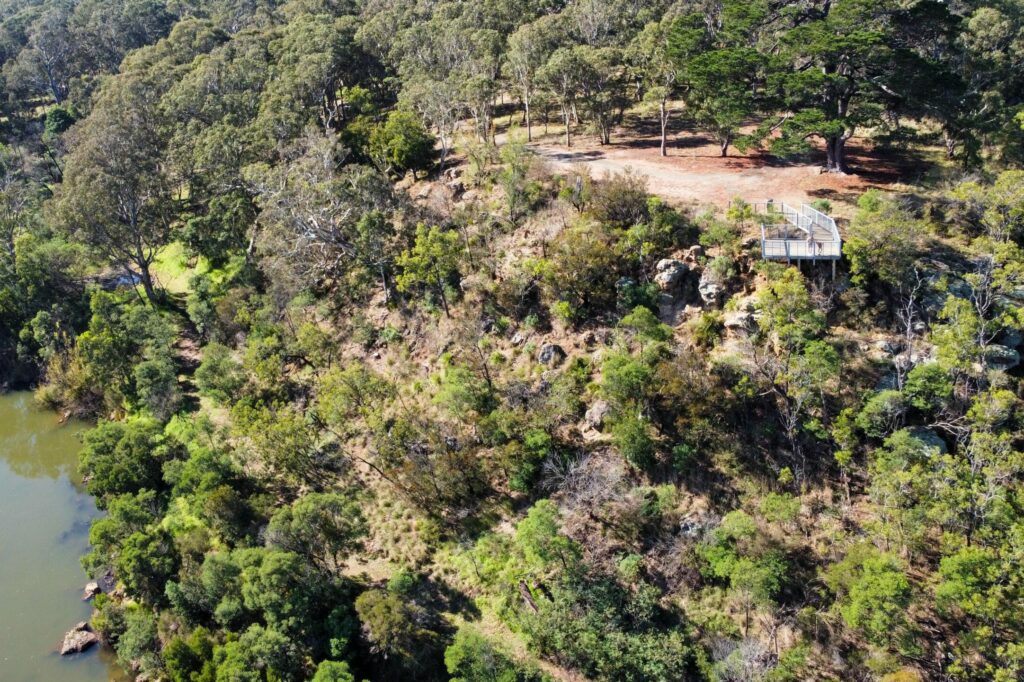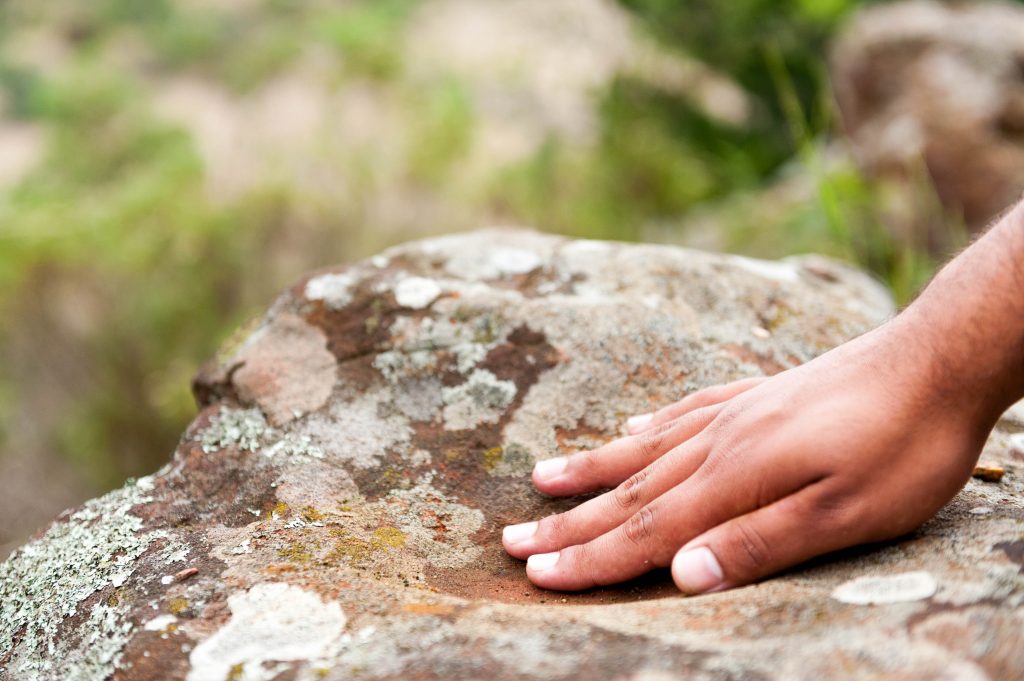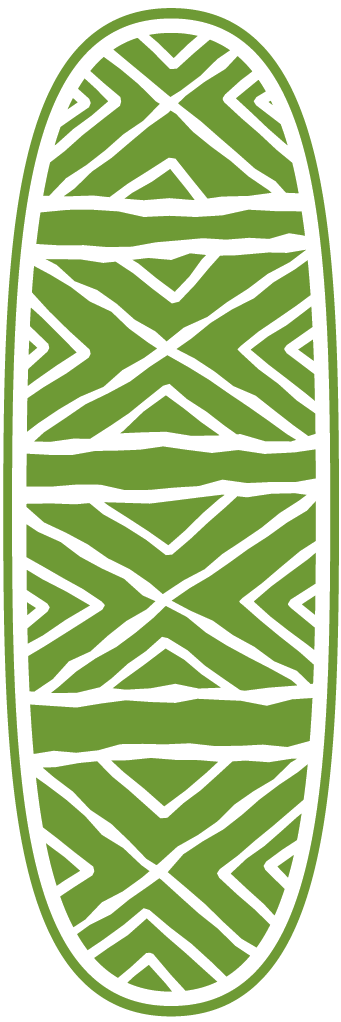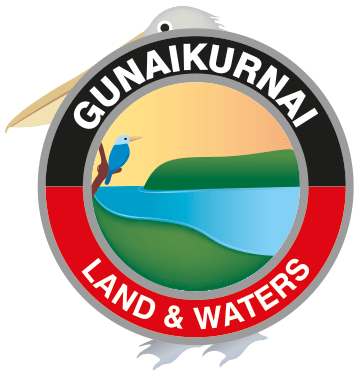The Knob Reserve
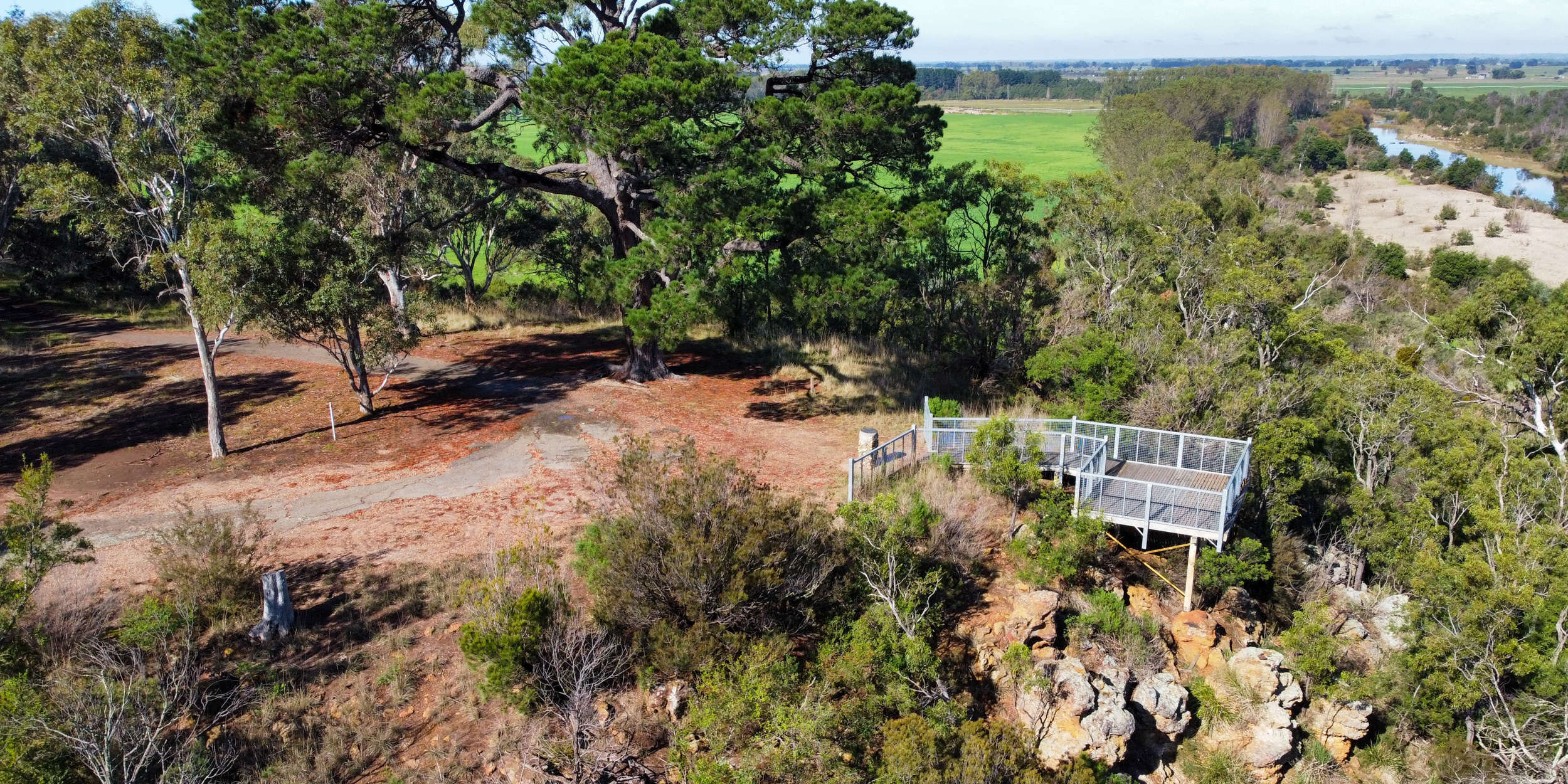
The Knob was traditionally a common ground for the five clans of the Gunaikurnai. Aboriginal people would travel for days to join great meetings where they would feast, share information, trade goods and practice corroborees and other cultural ceremonies.
The Knob Reserve is a small but significant site on Brayakaulung Country, 3km from the township of Stratford, which is owned by the GunaiKurnai people and jointly managed by Gunaikurnai Land and Waters Aboriginal Corporation and the Victorian Government.
In recognition of its significance to Gunaikurnai people, the Knob Reserve was chosen as the place where our 2010 Native Title determination was signed, and many family days and cultural festivals are still held at the site.
Because of the high concentration of artefacts in the Reserve and surrounding areas, our primary aim is to manage the impacts of users of the Knob Reserve in a way that protects our cultural heritage values and doesn’t cause harm.
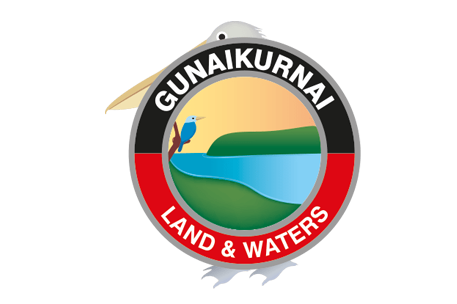
The Knob Reserve is one of the fourteen jointly managed parks and reserves within Gippsland.
The Joint Management Agreement recognises the fact that the Gunaikurnai people hold Native Title and maintain a strong connection to Country. As custodians of the land, they are the rightful people who speak for their Country.
These parks and reserves are cultural landscapes that
continue to be part of Gunaikurnai living culture.
The Knob Reserve was set aside in 1906 as a ‘recreation reserve’ and is managed in accordance with the Crown Land (Reserves) Act 1978 (Victoria) for public recreation purposes.
It demonstrates the living culture of Gunaikurnai in the present as well as the past: a traditional gathering place used by five clan groups for thousands of years; a place of clandestine resort in the nineteenth and twentieth centuries to maintain connections with family, separated during the mission era and the location of the ceremony to confer Victoria’s first native title determination in 2010.
The Dooyeedang (Avon River) was a major travelling route between the high country and the Gippsland Lakes, as well as providing eel, bream, flathead and prawn.
The bluff above the Dooyeedang was a significant campsite. Axe heads were sharpened on the sandstone grinding stones beneath the bluff. The resulting deep grooves are rare and significant in Victoria. Evidence of site scatters, scar trees and camps are also present within the reserve.
The reserve is within the Red Gum Plains landscape zone of the Gippsland Plains Bioregion and contains vegetation in a landscape of cleared agricultural land and residential lots and is recognised as having significant biodiversity values. The vegetation of the reserve has been the subject of several detailed surveys and assessments (e.g. Ethos NRM 2015, Oates and Frood 2017a). Five ecological vegetation classes (EVCs) have been identified in the reserve, as well as two unclassified vegetation communities. Three EVCs are significant.
Plains grassy woodland is the most important. Approximately three quarters of the reserve is covered by this EVC which was the original dominant vegetation throughout this portion of the Gippsland Plains. While previously extensive, it has been reduced to small isolated remnants as a consequence of clearing and land use practices. This vegetation type is also recognised as part of the broader ‘Gippsland Red Gum (Eucalyptus tereticornis subsp. mediana) Grassy Woodland and Associated Native Grassland Ecological Community (RGGWEC)’ that is listed as critically endangered under the Environment Protection and Biodiversity Conservation Act 1999 (Cwlth) (EPBC Act) and the ‘Forest Red Gum Grassy Woodland Community’, which is listed as threatened under the Flora and Fauna Guarantee Act 1988 (Vic).
A total of 304 plant species have been recorded in the reserve, of which 181 are native and 123 species are introduced to Victoria. Seven of the native vascular plants are classified as rare or threatened in Victoria and/or nationally. Plant species identified in the reserve in 2016 and listed as rare or threatened are shown in Table 3. Victorian or Commonwealth Action Statements do not currently exist for any of these species. DELWP’s NatureKit biodiversity data products provide important information for conserving flora and fauna in the reserve.
The reserve contains many plant species that have cultural importance (see ‘Gunaikurnai Cultural Heritage’ section above), but the fauna of the reserve has not been surveyed comprehensively. The Victorian Biodiversity Atlas (VBA 2014) holds records of 22 native fauna species at the location, (17 birds, 3 mammals and 2 reptiles). Four introduced animal species have also been recorded (Common Myna, Common Starling, European Rabbit and Red Fox). Grassy woodland vegetation communities generally provide habitat for a suite of woodland birds, ground dwelling reptiles,
mammals and invertebrates.
Wildlife known to frequent the reserve that have traditional importance to the Gunaikurnai include the Munjee (blackfish), No yorig (eel), Jirrah (kangaroo) Borun (pelican), Gidi (swan) and Goongera (possum).
The reserve is part of the West Gippsland Lower Avon sub-catchment. The catchment has a history of significant land clearing, which has resulted in severe erosion following flooding. Catchment management has focused on actions to minimise further erosion, water quality deterioration and potential downstream impacts on Ramsar wetlands.
The reserve consists of older alluvial plains and terraces of Quaternary origin and is part of the South Eastern Riverine Plains of the Eastern Plains of Victoria. The Dooyeedang defines the reserve’s south‐western border. It is an incised stream and is composed of a loose gravel bed system that is prone to instability during high flows.
A prominent feature of the reserve is the pebbly, sandstone bluff formed by the Avon River cutting through the Haunted Hill gravels. The brown or yellow sodosols tend to be waterlogged in wet periods and dry out quickly in dry periods during summer (Ethos NRM 2015).
Under joint management The Knob Reserve continues to be managed as an area accessible to the community for public recreation. There is a greater focus on protecting, promoting, appreciating and enjoying the natural and cultural values of the reserve.
The 2010 Native Title Determination and RSA recognised and reinforced the cultural role and importance of the reserve. The Gunaikurnai Whole of Country Plan (GLaWAC 2015) sets out the following management priorities for reserve:
• extending the Aboriginal Title boundary to include sections of the river bank that have a high concentration of important cultural sites
• revegetating the sand dune system to get the river flowing properly and cleanly again
• undertaking careful fire management in a way that is sensitive to cultural values – fuel management rather than burns and doing slashing rather than using earth breaks
• undertaking more cultural surveys, which is particularly important in such a populated area where there is a high risk of damage to sites
• recognising the need for formal agreements with users of the reserve, look at ways to ensure their use does not cause harm to the land or resources
• educating the local community about the sites and culturally appropriate use of them.
While recognising these priorities, the JM Plan sets out actions that are consistent with and limited to the terms of the 2010 Recognition and Settlement Agreement. Collaboration with the local and broader community and stakeholders will be central to the delivery of the plan.
The proximity of the reserve to Stratford and the interest and connections to the reserve held by numerous community groups provides an opportunity for cooperation between those groups and Gunaikurnai. Although managed for recreation, The Knob Reserve is very significant as a remnant of Gippsland Red Gum Grassy Woodland, which has been largely cleared elsewhere. It has had a history of many different activities, including stock grazing and use as a rifle range, and these have left impacts on the landscape.
Joint management provides an opportunity for renewal of the cultural importance of The Knob Reserve, restoration of the health of the reserve, and new opportunities for its enjoyment by the entire community.
Click here to read the full Joint Management Plan for The Knob Reserve
The Knob Reserve is managed by the Knob Recreation Reserve Management Committee Inc.
The committee consists of nine representatives from three organisations – the Victorian Department of Environment, Land, Water and Planning (DELWP), Gunaikurnai Land and Waters Aboriginal Corporation (GLaWAC) and the Gunaikurnai Traditional Owner Land Management Board (GKTOLMB).
It is accountable to the Minister for Energy, Environment, and Climate Change to manage, improve, maintain and control the reserve for recreational purposes under the Crown Land (Reserves) Act 1978 and has obligations to meet under various local, state and Commonwealth natural and cultural resource management regulations and laws.
Booking the Knob Reserve
The Knob Reserve can be booked by community groups and individuals, subject to a license or permit being granted.
Anyone can apply to book the Reserve for an event by completing the form below.
All permits are subject to standard terms and conditions designed to protect the values of the reserve, and bookings for large groups (30+) will require the permit holder to provide
temporary toilet facilities to accommodate their event.
A fee of $100 will apply for all events that require a permit.
Please read FAQs below for more information.
Who manages the Knob Reserve?
The Knob Recreation Reserve, located on Old Redbank Road in Stratford, is Crown land held in Aboriginal Title, managed by the Knob Recreation Reserve Management Committee Incorporated. The committee is formed by Gunaikurnai Land & Water Aboriginal Corporation (GLaWAC), and representatives from Gunaikurnai Traditional Owner Land Management Board (GKTOLMB) and the Department of Energy, Environment and Climate Action (DEECA). The committee is responsible for managing, improving, maintaining, and controlling the reserve in line with the purpose for which it is reserved (public recreation) and the Gunaikurnai Joint Management Plan. The committee is committed to protecting, promoting and enjoying the natural and cultural values of this important site.
Do I need to make a booking if I want to use the Knob Reserve?
The Knob Reserve can continue to be used by individuals for low impact recreational use without a permitor licence.
Community events, sporting events, school-based activities, and private functions involving more than 30 people will require a permit.
Larger events, commercial uses and regular/ongoing events at the reserve will require a licence.
How do I make a booking to use the Knob Reserve?
Please use the button above to make a booking.
You will be asked to provide your contact details and information about the proposed event such as proposed date, event type, number of people and vehicles attending, the area of the reserve you wish to use, and if your event has any special requirements.
The standard conditions of use for a permit can be found on the booking form. The committee reserves the right to add additional conditions if needed.
Is there a fee to use the Knob Reserve?
A fee of $100 will apply for all events that require a permit.
The committee may choose to waive the permit fee in special circumstances. Where a licence is required, the committee will determine the appropriate licence fee on a case-by-case basis.
What payment options are available?
Payment of the requested fees can be made via direct deposit. Details will be provided at the time the permit / licence is issued to you.
What is the difference between a permit and a licence?
A permit is a form of consent granted by the committee for small events that will contain a set of standard conditions to protect the values of the reserve and reserve users. A standard permit fee will apply.
A licence has the same purpose as a permit, but is designed for larger events that will contain additional conditions required to protect the values of the reserve and reserve users. The licence fee will be determined by the committee on a case-by-case basis.
Does a permit or licence give me exclusive use of the Knob Reserve?
No. A permit or licence does not give you exclusive use of the reserve or its facilities. It entitles the permit/licence holder to use the reserve (or nominated area) for the approved event subject to the term and conditions noted in the permit/licence.
The committee is not able to exclusively reserve the BBQ or shelters for your event. The facilities are for all to enjoy on a first come, first served basis.
Do I need Public Liability Insurance to use the Knob Reserve?
Yes. The permit/licence holder will need to provide evidence of Public Liability Insurance that covers their event and its activities prior to the event taking place. The committee accepts no liability for loss or damage to any items brought in by the permit holder or their guests.
Why is a booking system and fee structure being introduced now?
The committee has been working hard to enhance various policies and procedures that support goodgovernance. The committee recently decided to implement a new fee structure for events hosted at theKnob Reserve, replacing the previous donation-based procedure.
A booking system will help the committee ensure events are conducted in a way that protect reserve values and public safety. And will also help ensure events do not clash with planned works or other uses of the reserve.
Fees raised through permits and licences go towards the costs of maintenance and utilities at the reserve.
